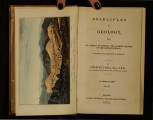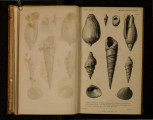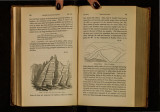| OCR Text |
Show 332 SECONDARY FORMATIONS. [Ch. XXIII. groups of strata above enumerated by us~ ~ames were given ~o each, derived from the mineral compositiOn of the rocks m those parts of Germany, England o: France, where they happened to be first studied. When 1t wa~ afterwards acknowledged that the zoological and phy~olog1cal charac~ers o.f the same formations were far more persistent than their mmeral peculiarities, the old names were still retained, instead of being exchanged for others founded on more constant and essential characters. The student was given to understand, that the terms chalk, green-sand, oolite, red marl, coal, and others, were to be taken in a liberal and extended sense; that chalk was not always a cretaceous rock, hut, in some places, as on the northern flanks of the Pyrenees, and in Catalonia, a saliferous red marl. Green-sand, it was said, was rarely green, and fre· quently not arenaceous, but represented in parts of the south of Europe by a hard dolomitic limestone. In like manner, it was declared that the oolitic texture was rather an exception to the general rule in rocks of the oolitic period, and that no particle of carbonaceous matter ~ou~d often be .detect~d in the true coal formation of many districts where 1t attams great thickness. It must be obvious to every one, that inconvenience and erroneous prepossessions could hardly fail to arise from such a nomenclature, and accordingly a fallacious mode of rea. soning has been widely propagated, chiefly by the influenc~ of a lanauaae so singularly inappropriate. Af~er ~he admission that the identity or discordance of mineral character was by no means a sure test of agreement or disaareement in the age of rocks, it was still thought, by many geol~gists, that if they found a rock at the antipodes agreei~g precisely in mineral composition with another well known lD Europe, they could fairly presume that both are of the same acre until the contrary could be shown. oN' ow it is usually difficult or impossible to combat su' ch an assumption, on geological grounds, so lon? as we are l~per· fectly acquainted with the geology of a distant country, ~~asmuch as there are often no organic remains in the foreJgn Ch. XXIII.) SUPPOSED UNIVERSALITY OF RED MARL. 333 stratum, and even if these abound and are specifically difFerent from t~e fossils of .the supposed European equivalent, it may be obJected, that we cannot expect the same species to have inhabited very distant quarters of the globe at the same time. Supposed universality of red marl.-We shall select a remark. able example of the erroneous mode of generalizing now alluded to. A group of red marl and sandstone, sometimes containing salt and gypsum, is found in England interposed between the lias and the carboniferous strata. For this reason, other red marls and sandstones, associated some of them with salt and others with gypsum, and occurring not only in different parts of Europe, but in Peru, India, the salt deserts of Asia, those of Africa, in a word, in every quarter of the globe, have been referred to one and the same period. 'l'he burden of proof is not supposed to rest with those who insist on the identity of age of all these groups, so that it is in vain to urge as an objection, the impr~bability of the hypothesis which would imply that all the movmg waters on the globe were once simultaneously charged with sediment of a red colour. But the absurdity of pretending to identify, in age, all the red sandstones and marls in question, has at length been sufficiently exposed, by the discovery that, even in Europe, they belong .decidedly to many different epochs. 'Ve have already ascertamed, that the red sandstone and red marl with which the rock·salt of Cardona is associated, may be referred to the period of our chalk and green-sand*. We have pointed out that in Auvergne there are red marls and variegated sandstones, which are undistinguishable in mineral composition, from the new red sandstone of English geologists, but which were deposited in the Eocene period ; and, lastly, the gypseous red marl of Aix in Provence, formerly supposed to be a marine secondary group, is now acknowledged to be a tertiary freshwater formation. "' I was led to this opinion when I visited Cardona in 1830, and before 1 was awa~e that M. Dufrenoy had anived at the same conclusions. Ann. des Sci. Nat. AVI'll, 1831, 1'·449. ' |






























































































































































































































































































